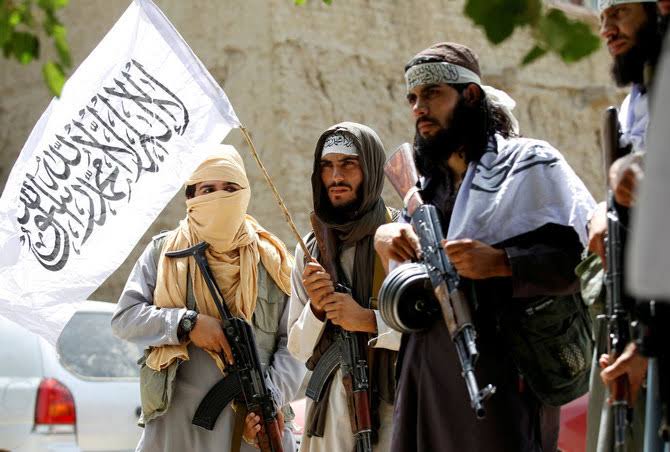Once a ceasefire pact is reached, those affiliated with TTP will seek new objectives in new regions like Kashmir.
New Delhi: The 13th “Analytical Support and Sanctions Monitoring Team” report, prepared by Edmund Fitton-Brown of the Analytical Support and Sanctions Monitoring Team and published by the UN Security Council (UNSC) on 26 May, has stated the Tehreek-e-Taliban (TTP) Pakistan is likely to have 3,000 to 4,000 fighters in its rank.
When Brown submitted the report on 28 April to the UNSC, the TTP was focused on its military campaign against the Pakistan army. However, since 28 April and now, the situation has changed drastically on the ground with the TTP leadership being pushed to arrive at some sort of ceasefire agreement with the Pakistan army.
The TTP, which to a large extent, is dependent on the support that it gets from the Afghan Taliban, that assumed power in Kabul in August last year, for its action against the Pakistan military is likely to capitulate to the demands of Pakistan army under the pressure that is being exerted by Taliban leader Sirajuddin Haqqani who is acting as the mediator on the behalf of Pakistan army.
While Pakistan media have claimed that three months’ ceasefire agreement has been reached, sources close to the other side told The Sunday Guardian on Wednesday that no agreement has been reached yet, but the talks were going on and TTP cadre had been asked not to carry out any attacks on Pakistani military till further notice. However, what is likely to come as a cause of concern for the international as well as Indian security apparatus is the probability that once a ceasefire agreement between the TTP and Pakistan army is reached, those affiliated with the TTP are likely to seek new “objectives” in new regions, the nearest of which is Kashmir and India.
“Once the ceasefire agreement is reached, the TTP will not be able to carry out any attack against Pakistani interests to force the implementation of Islamic law in the Af-Pak region which they have been demanding. This will ‘free’ the cadre to move into different directions and join other tanzeems (groups). It is expected that many of them will join other groups, upset that their ‘religious war’ ended in a failure,” a source, who is familiar with the internal developments happening between TTP-Taliban-Pakistan army, said.
The UNSC report, albeit indirectly, too has indicated a similar effect that the ceasefire will have on TTP. “It remains in the interest of TTP to adhere to a hardline position as a means of maintaining unity.” Thereby making it clear that once a ceasefire is reached, the TTP is likely to see a mass-scale desertion, something which the Pakistan army has been trying for to weaken the group.
In case the ceasefire comes into effect, the armed groups that are likely to attract the TTP fighters, among others, are going to be Jaish-e-Mohammed and Lashkar-e-Tayyaba, both of which have been programmed, nurtured and promoted as specific non-state actors by GHQ, Rawalpindi, to carry out terror attacks within the border of India. Both these groups also have a stated objective of implementation of Sharia law in India, something that will resonate well with the TTP cadre who decide to leave the TTP.
The TTP too had “condemned’ the religious statements made by a BJP political leader. However, its condemnation was drowned in the cacophony of angry statements that were released by atleast 15 countries.
The TTP leadership, has so far, refused to become a pawn of GHQ with regards to Kashmir, something which LeT and Jaish have. In January this year, in an interview to this newspaper, TTP chief Noor Wali Mehsud had stated that he had no interest in what was happening in India nor was it having any relationship with Lashkar and Jaish. However, the same may hold true following the execution of ceasefire with Wali himself finding it hard to control the “upset” and “renegade” fighters.
As per the findings of the UNSC report, Wali has three deputies, Mawlawi Faqir Mohammad, Mufti Hazrat Deroji alias Amjad and Omar Khalid Khurasani alias Abdul Wali Rakhib. The TTP leadership council sits above two regional committees (Northern and Southern) that cover seven separate zones of operation. The main body of TTP also includes 17 former splinter groups that re-joined the main TTP body in the period from 2020 to 2021. This clearly shows that the TTP is made up of many branches, each capable of moving towards different directions if they decide which is likely to happen due to a loss of ‘common objective’.
Incidentally, both Lashkar and Jaish, as per the findings by the UNSC which has been recorded in the said report, have considerable presence in Afghanistan. “Jaish-i-Mohammed is a Deobandi group that is ideologically closer to the Taliban. The leader of the group is Masood Azhar and Qari Ramazan is the newly appointed head of JiM in Afghanistan. JiM maintains eight training camps in Nangarhar, three of which are directly under Taliban control.”
Similarly, the UN experts found that LeT is led by Mawlawi Yousuf in Afghanistan. In October 2021, another LeT leader, Mawlawi Assadullah, met with Taliban Deputy Interior Minister Noor Jalil. In January 2022, a Taliban delegation visited a training camp used by LeT in the Haska Mena district of Nangarhar. The LeT is said to maintain three camps in Kunar and Nangarhar.

